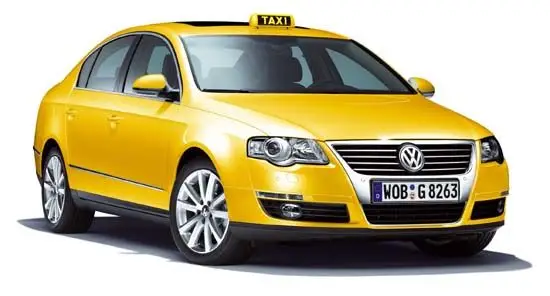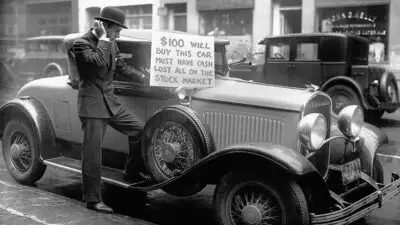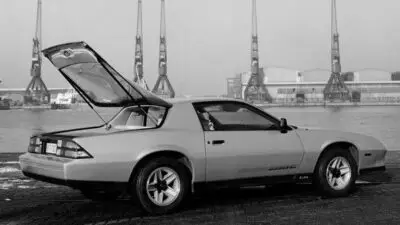The journey of taxi services begins in the 17th century when a Frenchman named Nicolas Sauvage introduced the first horse-drawn carriages for hire, known as “fiacres.” These early taxis served as the foundation for what would become a global transportation industry. As cities grew and technology advanced, so did the methods of getting around.

The early 1900s marked a significant turning point with the introduction of motorized taxis, replacing horse power with engine power. The taxi industry has undergone a remarkable transformation over centuries, evolving from simple horse-drawn carriages to sophisticated digital platforms and autonomous vehicles that connect passengers with drivers instantly. This evolution reflects broader changes in technology, urban development, and consumer expectations.
Today’s ride-hailing services like Uber represent the latest chapter in taxi transportation, merging traditional concepts with smartphone technology. The modern passenger can now summon a ride with a few taps on a screen, track their driver’s arrival in real-time, and pay automatically—conveniences that would have seemed magical to the first taxi passengers hundreds of years ago.
Key Takeaways
- The taxi industry began with horse-drawn carriages in the 17th century before evolving through motorized vehicles to today’s digital platforms.
- Technological advancements have transformed how people access transportation services, making rides more convenient and accessible.
- Regulatory frameworks and safety standards continue to adapt as new transportation models challenge traditional taxi operations.
Historical Development of Taxis

The taxi industry has transformed dramatically over centuries, evolving from simple horse-drawn vehicles to sophisticated motorized transportation. This evolution reflects broader technological advancements and changing urban needs across different major cities worldwide.
The Genesis of Horse-Drawn Cab Services
The concept of for-hire transportation dates back to ancient civilizations, but the formal taxi industry began in the 17th century. In 1635, the first documented taxi service started in London with horse-drawn hackney carriages available for public hire.
The hansom cab became particularly popular in the 19th century. Designed by Joseph Hansom in 1834, these two-wheeled vehicles offered greater speed and maneuverability than earlier four-wheeled carriages.
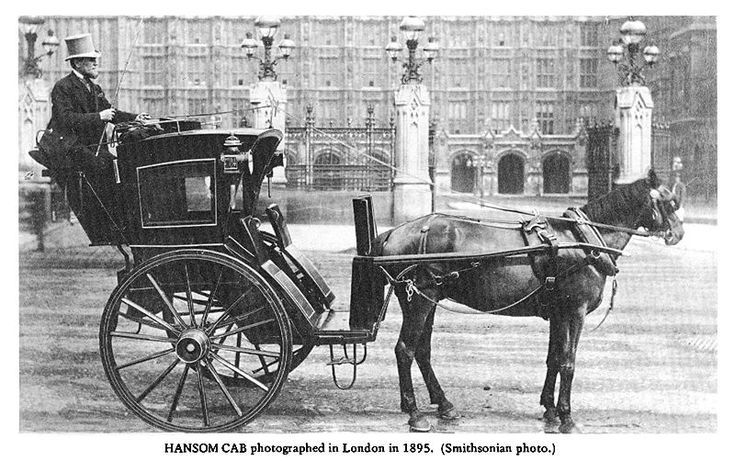
Horse-drawn taxis spread to other major cities including Paris and New York. They featured distinct benefits: they were relatively affordable, could navigate narrow streets, and became an essential part of urban infrastructure.
By the late 1800s, these services had established regulations, fixed rates, and licensing systems that formed the foundation for modern taxi operations.
The Rise of the Motorized Taxi
The transportation landscape changed forever when the first motorized taxis began replacing horse-drawn cabs in the 1890s. Initially, electric vehicles were preferred for taxi service due to their quiet operation and cleanliness.
In 1897, the first electric taxi service was introduced, followed by the first gasoline-powered taxi in 1899, created by French engineer Louis Renault. This marked a significant turning point in taxi history.
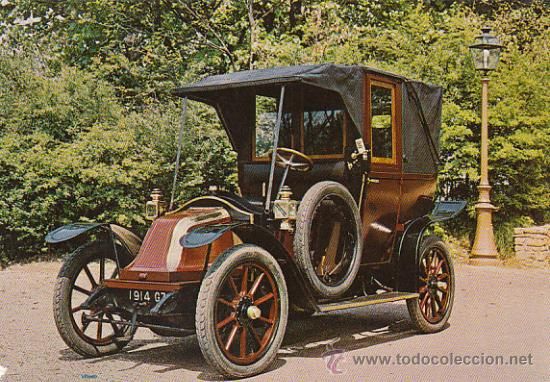
The Taxicab Company of New York introduced a fleet of 600 gasoline-powered vehicles in 1907, revolutionizing urban transportation. These early motorized taxis featured mechanical taximeters that calculated fares based on distance.
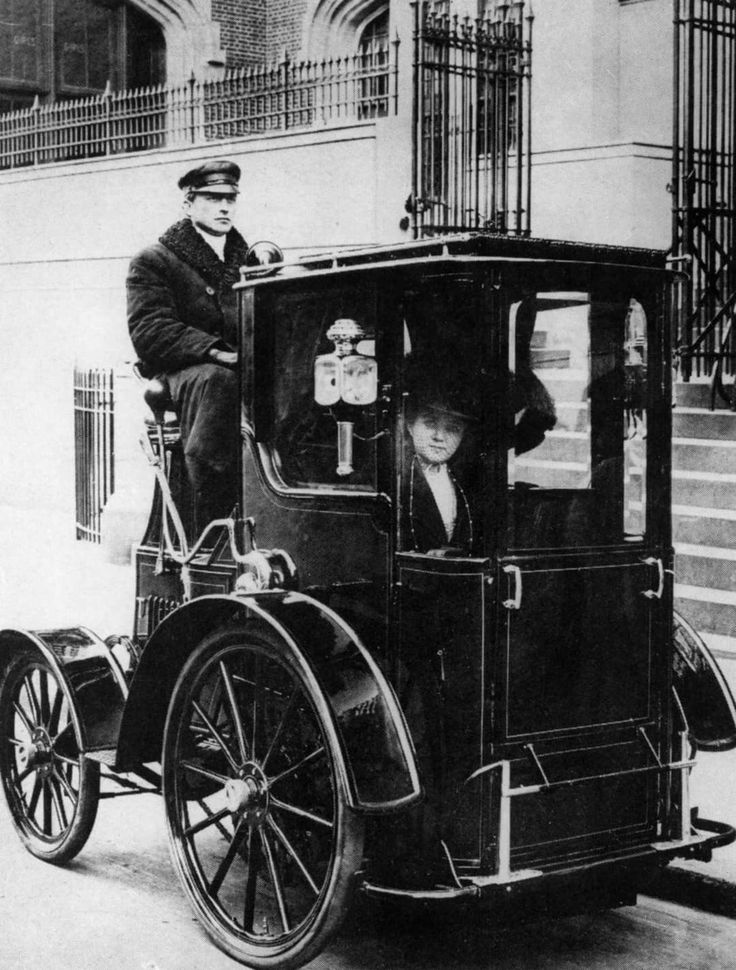
By the 1920s, motorized taxis had largely replaced horse-drawn vehicles in major cities. Companies began standardizing vehicles and services, creating recognizable brands and more reliable transportation options.
London’s Iconic Black Cabs
London’s black cabs represent one of the most distinctive taxi services in the world. The tradition began in the early 20th century when the London General Cab Company painted their vehicles black to give them a formal, distinguished appearance.
In 1958, the famous FX4 model was introduced, establishing the iconic silhouette recognized globally today. These vehicles were specifically designed with a tight turning radius (25 feet) to navigate London’s narrow streets and roundabouts.
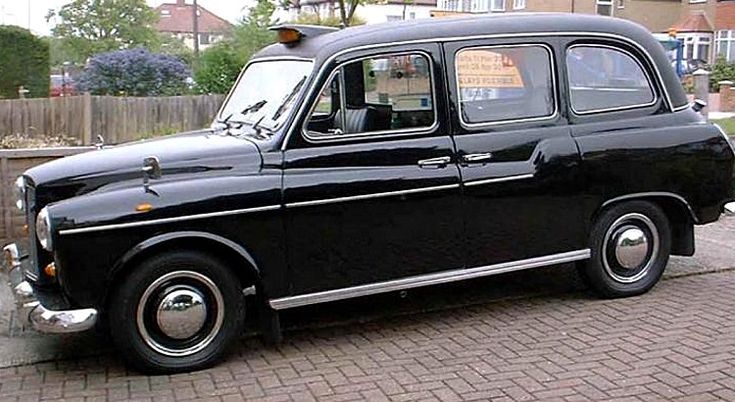
Black cab drivers must pass “The Knowledge,” an extremely rigorous test requiring memorization of over 25,000 streets and 20,000 landmarks within a six-mile radius of Charing Cross. This tradition dates back to 1865.
Today, London’s black cabs continue to evolve with hybrid and electric models while maintaining their distinctive appearance and high service standards.
The New York Yellow Cabs Phenomenon
New York’s yellow cabs began their iconic journey in 1908 when businessman Albert Rockwell imported 600 gasoline-powered taxis. The distinctive yellow color was chosen in 1915 by John Hertz (of Hertz Rent-A-Car fame) for visibility and brand recognition.
In 1967, the city made the yellow color mandatory for all licensed taxis. The Checker cab became the quintessential New York taxi during the mid-20th century before being replaced by more modern vehicles in the 1980s.
The medallion system, introduced in 1937, limited the number of official taxis, creating a regulated industry. At their peak, taxi medallions sold for over $1 million, demonstrating the industry’s economic significance.
Yellow cabs became cultural icons, appearing in countless films and television shows. They represented New York’s fast-paced lifestyle and served as a reliable transportation network before ridesharing disrupted the industry.
Taxi Industry and Public Transportation

Taxis serve as a vital component of public transportation networks worldwide, offering flexibility and convenience that complement fixed-route systems. The relationship between taxis and public transit has evolved through regulatory frameworks and a growing recognition of their essential role in urban mobility.
Regulation and Standardization of Cab Fares
Taxi fare regulation emerged as cities sought to protect consumers and ensure fair pricing. In the early 20th century, most major cities implemented metered fares to replace arbitrary pricing practices. By the 1930s, municipalities established transportation authorities to oversee cab fares and service standards.
Today’s fare structures typically include:
- Base fare: Initial charge when entering the taxi
- Distance rate: Cost per mile/kilometer traveled
- Time rate: Additional charges for waiting or slow traffic
- Surcharges: Extra fees for airport pickups, late-night service, or additional passengers
Regulation extends beyond pricing to include vehicle safety standards, driver licensing, and insurance requirements. These measures help maintain public trust in taxi services as a reliable transportation option.
Taxi Services as a Pillar of Urban Mobility
Taxis fill critical gaps in public transportation networks by providing service when and where fixed routes cannot. They offer door-to-door convenience and operate during hours when buses and trains may not run. This flexibility makes taxis essential for urban mobility, particularly for seniors, disabled individuals, and those traveling with luggage or in bad weather.
The taxi industry serves important economic and social functions:
- Providing employment opportunities for drivers
- Offering transportation in underserved areas
- Supporting tourism by helping visitors navigate unfamiliar cities
- Providing safe transit options when other modes are unavailable
Taxis complement rather than compete with mass transit. In many cities, taxi stands are strategically located near transit hubs, creating seamless connections between transportation modes. This integration strengthens the overall public transportation ecosystem and enhances mobility options for urban residents.
The Introduction of Ridesharing Services

The transportation landscape underwent a dramatic shift with the emergence of app-based ridesharing platforms in the early 2010s. These digital services connected riders with drivers using personal vehicles, creating a new model that challenged the century-old taxi industry.
The Emergence of Uber and Its Global Influence
Uber launched in 2009 as “UberCab” in San Francisco, initially offering black luxury cars before introducing the more affordable UberX service in 2012. The company’s revolutionary smartphone app allowed users to hail rides with a few taps, track their driver in real-time, and pay automatically through stored credit cards.
By 2015, Uber had expanded to over 300 cities worldwide, transforming urban transportation. The company’s aggressive growth strategy included:
- Heavy investment in technology infrastructure
- Substantial driver incentives to build supply
- Promotional rider discounts to drive demand
- Lobbying efforts to operate in regulated markets
Uber’s business model fundamentally changed consumer expectations around convenience, transparency, and service quality in transportation. The company’s valuation soared to billions of dollars as it disrupted traditional taxi services across the globe.
Lyft, Ola, and Other Ridesharing Competitors
While Uber pioneered the modern ridesharing concept, competitors quickly emerged. Lyft launched in 2012, distinguishing itself with a more friendly approach and features like tipping drivers. The pink-mustached cars became a recognizable alternative to Uber in the United States.
Internationally, regional competitors gained significant market share. Ola dominated in India, while DiDi Chuxing became the ridesharing leader in China. Other notable competitors included:
- Grab (Southeast Asia)
- Bolt/Taxify (Europe and Africa)
- 99 (Brazil)
- Careem (Middle East)
These companies often adapted the ridesharing model to suit local preferences and regulations. Many introduced unique features like motorcycle taxis, auto-rickshaws, or carpooling options to differentiate themselves and serve specific market needs.
Impact on Traditional Taxi Services
The rise of ridesharing services devastated many traditional taxi companies. Medallion values—once worth hundreds of thousands of dollars in cities like New York—plummeted as riders flocked to more convenient alternatives.
Traditional taxis faced several disadvantages:
| Taxis | Ridesharing Services |
|---|---|
| Fixed pricing | Dynamic pricing |
| Phone dispatch | App-based hailing |
| Cash payments | Cashless transactions |
| Limited vehicle types | Various vehicle options |
| Regulated fleet size | Flexible driver supply |
Many taxi companies attempted to modernize by developing their own apps or joining services like Curb. Some cities implemented regulations to level the playing field, requiring ridesharing companies to conduct background checks and obtain special licenses.
Despite these challenges, the taxi industry has shown resilience by adopting technology and focusing on reliability. However, ridesharing services fundamentally changed customer expectations about urban transportation, forcing the entire industry to evolve.
Technological Advancements and Their Impact

The taxi industry has undergone remarkable transformation through technological innovations. These advancements have not only changed how taxis operate but have fundamentally reshaped urban mobility patterns worldwide.
The Shift Towards Electric and Autonomous Vehicles
The taxi industry is rapidly embracing electric vehicles as a cleaner alternative to traditional combustion engines. Companies like Tesla and BYD are manufacturing purpose-built electric taxis with extended range capabilities specifically designed for commercial use.
These electric taxis offer significant operational cost savings. Drivers typically save 60-70% on fuel costs compared to conventional vehicles, while maintenance requirements are substantially lower due to fewer moving parts.
Autonomous vehicles represent the next frontier in taxi evolution. Companies such as Waymo and Cruise are already testing driverless taxis in select cities. These self-driving taxis use a combination of LiDAR, cameras, and sophisticated AI to navigate urban environments.
Safety remains a primary focus, with autonomous taxis demonstrating promising early results. Many experts predict fully autonomous taxi fleets could become commonplace in major cities by 2030.
Innovations in Ride Hailing Applications
The introduction of GPS technology and mobile applications has revolutionized how people access taxi services. Ride-hailing platforms like Uber, Lyft, and Didi Chuxing have created digital marketplaces connecting riders directly with drivers.
These apps offer several key advantages over traditional taxi services:
- Real-time tracking of vehicle location and arrival time
- Transparent pricing through upfront fare estimates
- Enhanced safety via driver verification and trip sharing
- Cashless payments through integrated payment systems
Algorithmic dispatch systems have dramatically improved efficiency. Modern ride-hailing platforms can optimize route selection, reduce wait times, and implement dynamic pricing during peak demand periods.
Data analytics has become increasingly important in the industry. Companies analyze millions of trips to identify patterns, optimize driver placement, and improve overall service quality.
Safety and Regulatory Challenges

The taxi industry has faced significant safety concerns and regulatory hurdles throughout its evolution, especially with the emergence of digital platforms and ridesharing services. These challenges have sparked debates about passenger protection, driver screening, and fair competition.
Ensuring Safety in the Taxi and Ridesharing Industry
Traditional taxis operate within a regulated framework that requires background checks for drivers and safety standards for vehicles. These measures aim to protect passengers and maintain service quality.
In contrast, ridesharing companies initially operated in a regulatory gray area. Many cities experienced safety incidents that raised concerns about driver vetting processes.
In response, companies like Uber and Lyft implemented safety features such as:
- Real-time GPS tracking
- Driver and passenger ratings
- Emergency assistance buttons
- Photo identification verification
- Trip sharing capabilities
Despite these improvements, safety incidents continue to occur. Some regions have mandated additional requirements such as fingerprint-based background checks and additional vehicle inspections to address these concerns.
Regulatory Responses to the Ridesharing Phenomenon
When ridesharing services first emerged, they disrupted existing taxi regulations that had been established over decades. This created tension between traditional operators and new digital platforms.
Regulatory bodies worldwide have responded differently to the challenge. Some cities initially banned ridesharing services outright, while others quickly created new regulatory categories.
Common regulatory approaches include:
- Creating new transportation network company (TNC) classifications
- Requiring commercial insurance coverage
- Implementing driver background check standards
- Setting vehicle inspection requirements
- Establishing data sharing protocols with city authorities
The regulatory landscape continues to evolve. Some regions have adopted unified frameworks that apply similar standards to both traditional taxis and ridesharing services, creating a more level playing field.
Labor classification remains contentious, with ongoing debates about whether drivers should be classified as employees or independent contractors. This decision affects driver benefits, company costs, and the fundamental business model of ridesharing.
Current Trends and the Future of Transportation Services

The taxi industry continues to evolve rapidly with technological innovations and changing social priorities shaping how we move around cities. These developments are creating new opportunities for both providers and customers.
The Growing Demand for Eco-Friendly Travel
Environmental concerns have pushed the taxi industry toward greener alternatives. Electric vehicles are becoming increasingly common in taxi fleets worldwide, reducing emissions and operating costs.
Many cities now offer incentives for taxi companies that transition to electric or hybrid vehicles. These include tax breaks, reduced licensing fees, and exclusive access to certain areas.
Ridesharing companies like Uber and Lyft have introduced eco-friendly options in their apps. Users can specifically request electric vehicles or carpooling services to reduce their carbon footprint.
Consumer demand for sustainable transportation is growing steadily. A recent survey showed that 68% of riders would choose an eco-friendly taxi option if available at similar pricing to conventional taxis.
Adapting to Changing Consumer Behaviors
Digital technology has transformed how customers interact with transportation services. Mobile apps have become the primary method for booking rides, offering convenience and transparency.
Autonomous vehicles represent the next frontier in taxi services. Self-driving taxis are already being tested in several cities, promising to reduce costs and improve safety in the long term.
Personalization has become essential in modern ridesharing. Services now offer various vehicle types, pricing tiers, and amenities to meet specific customer needs.
Subscription models are gaining popularity among frequent users. These plans offer regular riders discounted rates, priority service, and special perks for a monthly fee.
Integration with other transportation options is creating seamless travel experiences. Many platforms now connect taxis with public transit, bike shares, and scooters for complete journey planning.
Frequently Asked Questions

The taxi industry has undergone remarkable transformations throughout history, driven by technological innovations, regulatory changes, and shifting consumer preferences. These changes have reshaped how people travel in urban environments.
What were the significant milestones in the development of taxi services?
The journey of taxi services began with horse-drawn carriages in the 17th century, which served as the first organized taxi systems in major European cities. These early services established the foundation for paid urban transportation.
The early 1900s marked a crucial turning point with the introduction of motorized taxis, replacing horse-drawn vehicles and dramatically increasing speed and efficiency. The iconic yellow cab appeared in New York City during this era, becoming a cultural symbol.
The installation of taxi meters in the 1890s revolutionized fare calculation, creating transparency and standardization in pricing. Later, the introduction of two-way radios in the 1940s enabled dispatchers to communicate with drivers, improving service coordination.
How have ride-sharing apps influenced the regulations surrounding taxi services?
Ride-sharing platforms created regulatory challenges that forced cities worldwide to reconsider traditional taxi laws. Many municipalities established new categories of transportation services to accommodate these digital platforms.
Insurance requirements shifted significantly, with new policies developed specifically for drivers who use personal vehicles for commercial purposes. This created a more flexible framework for part-time drivers.
Background check protocols evolved in response to safety concerns, with ongoing debates about the appropriate level of screening for drivers. Some cities maintained stricter requirements for traditional taxis, while others standardized regulations across all vehicle-for-hire services.
In what ways did technology contribute to the evolution of the taxi industry?
GPS technology transformed route navigation, making it easier for drivers to find efficient paths and for passengers to track journeys. This eliminated the need for drivers to memorize complex city layouts.
Mobile payment systems revolutionized transactions, removing the friction of cash exchanges and automatically calculating fares based on distance and time. This increased convenience and reduced payment disputes.
App-based booking platforms connected passengers directly with nearby drivers, dramatically reducing wait times and allowing for real-time service adjustments. These systems optimized vehicle distribution throughout urban areas.
Rating systems introduced accountability and service quality metrics that were previously unavailable. This created incentives for drivers to maintain high standards and allowed passengers to make informed choices.
What strategies are traditional taxi companies implementing to remain competitive against rideshare companies?
Many traditional taxi services have developed their own mobile applications that mimic the convenience of rideshare platforms. These apps include features such as GPS tracking, estimated arrival times, and cashless payment options.
Fleet modernization has become a priority, with companies investing in newer, more fuel-efficient vehicles and improving interior comfort. Some services have even introduced luxury vehicle options to capture high-end market segments.
Driver training programs have been enhanced to emphasize customer service excellence and professional conduct. These initiatives aim to differentiate traditional taxis through superior service quality and local knowledge.
Fixed pricing for common routes has been implemented by some companies to compete with the transparent pricing of rideshare services. This helps passengers know costs upfront without worrying about meter variations.
What impact has the rise of rideshare services had on taxi drivers and their livelihoods?
Many traditional taxi drivers have experienced significant income reductions due to increased competition. This has led to financial hardship for drivers who invested heavily in taxi medallions or permits that have depreciated in value.
The shift toward app-based services has created both challenges and opportunities for drivers. Some have transitioned to working for multiple platforms, while others struggle with the technological learning curve.
Job flexibility has increased, allowing drivers to set their own hours and work patterns. However, this flexibility often comes with reduced job security and benefits compared to traditional taxi employment structures.
Driver demographics have evolved, with rideshare platforms attracting many part-time workers who use driving as supplemental income rather than a career. This has changed the professional landscape of the industry.
How has consumer behavior shifted with the introduction of app-based taxi services?
Spontaneous travel has become more common as passengers can secure transportation quickly without planning ahead. This has changed urban mobility patterns and increased the frequency of short trips.
Price sensitivity has increased, with consumers actively comparing options between different services before booking. Many passengers now make transportation decisions based on surge pricing, promotions, and estimated costs.
Safety perceptions have evolved with the introduction of driver profiles, GPS tracking, and the ability to share trip details with others. These features have made solo travelers more comfortable using taxi services.
Customer expectations regarding vehicle cleanliness, driver professionalism, and service consistency have risen substantially. Modern passengers expect digital receipts, accurate ETAs, and seamless experiences from pickup to dropoff.
